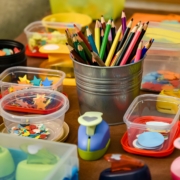Tupperware: Trapped in Tendencies for Trouble
We may soon have a world without Tupperware. Recently, there have been numerous doom-laden reports on the sad situation for this iconic American brand-business. In fact, a brief Nexis search of Tupperware-demise articles for the past week alone turned up 13 pages of commentary.
Pundits and analysts identified the many reasons for Tupperware’s dire straits. There is the lack of innovation. There is the lack of focus on the changing roles of women. There are the two-year Covid-19 restrictions on gatherings. There are the supply chain issues created by Covid-19. There are the price increases on materials. And, so forth.
Tupperware has yet to die. But, what is clear is that the brand-business fell victim to several brand-business tendencies for trouble. Not every brand-business enmeshed in troubling landscapes dies. Brands such as Lego, Campbell’s, McDonald’s have all been in trouble and managed to claw their way back to incredible success. Even Toy R’ Us is actively seeking rejuvenation with its stores inside of all Macy’s stores. Unfortunately, others such as Blackberry, Nokia, Sears, Avon, Kodak and Bed, Bath & Beyond have left the scene, are leaving the scene or are shadows of their former selves. Sometimes brand-business decline is a fast, free fall. Sometimes it takes decades. Some observers indicate that Tupperware’s current troubles were years in the making.
Tendencies for trouble are the result of brand mismanagement. Tendencies for trouble must be considered as “stop-now” behaviors and attitudes. When it comes to brand-business revitalization, brand-business teams need to eliminate these “stop-nows” as these are impediments to invigoration.
Tendencies for trouble have financial consequences. Anything that stops a brand-business from growing customer-perceived brand value has financial consequences. Customer-perceived brand value depends on renovation, innovation and relevant differentiation. Without customer-perceived brand value, there is no shareholder value.
Tupperware is a poster child for several corporate tendencies for trouble. The jury is out as to whether Tupperware will find a pathway back to success. However, in order to do so, Tupperware will need to reverse its engagement with the behaviors and attitudes that have forced the brand-business into its downward spiral.
First, Tupperware became complacent. Complacency is comfortable but it is a hindrance to success.
For brand-businesses, complacency must be avoided. Complacency stops ideas and innovation. Complacency allows brand-businesses to stop focusing on changing customer needs. Complacency permits employees to keep on doing what they are most comfortable doing, lulling people into laziness and inaction. Complacency crushes curiosity and creativity.
Complacency gives brand-businesses permission to stop looking at the changes in the world and in its specific market segment. Specifically, complacency takes eyes off new entries in your category and in identified segments. Complacency blinds a brand-business to the forces of the changing world. It creates a “staying alive” mentality rather than a “moving forward” mentality. Complacency supports the static mind-set that keeps the brand away from risk. As the Frederic Forrest character Chef says in Apocalypse Now, “Never get off the boat.”
Complacency is simply brand-business mismanagement. Brands are not passive; they are promises. Brands are active promises of an expected, relevant, differentiated experience. Brands can be soft, quiet, traditional, laid back, and chill. But, they have to move if they want to deliver a relevantly differentiated experience. Complacency is anti-movement creating inaction and, eventually, irrelevancy.
The more powerful and successful the brand, the easier it is to walk off the complacency cliff. Complacency leads brand-businesses to believe that there is now nothing left to do but live off past success.
Brand-businesses that fall into complacency due to their belief in their historical power lose because other brands in the competitive set are innovating all the time. Complacent brand-businesses are so enamored with their success that they stop looking outside at new entries and new threats.
Complacency is a culture flaw. Brands need leaders who fight complacency. Complacency is satisfying. But, from a brand-business perspective, it generates inaction supporting the trajectory of continuing to do what has worked in the past instead of what will work in the future.
Second, Tupperware fell for the belief that what worked yesterday will continue to work today and tomorrow.
Customers change; the world changes; brand reputations change; competition changes. Doing what once worked when the current landscape is different makes no sense. Standing still while changes rage around you is a formula for failure.
Peter Drucker, the marketing guru, recognized the pitfalls into which so many great brand-businesses fall when it comes to doing the same thing over and over again. His lessons include these:
- Environments change. Continuing strategies and actions that created past successes will eventually lead to failure.
- Being defensive and unyielding will also lead to failure. Brand-businesses must be willing to (quickly) abandon formerly successful approaches.
- Believe that change will happen and that sometimes the change will be revolutionary. Brand-businesses should create the future by making changes even though it means “obsolescing the products or methods of its current and past success.”
Leadership is critical. Brand-businesses need leaders who are able to change their minds and switch direction when necessary. Leadership must be able to ditch a no-longer-viable strategy. At some point, leadership must be able to say that it knows as much as it can know and is capable of making an informed judgment call, even if it seems to be a leap of faith.
Markets and customers change quickly. Brand-businesses must be flexible, agile and quickly decisive. This is why it is important to have leadership that is willing to look outward rather than backward. Just think of all the brand-businesses that had to quickly rethink and implement new strategies when Covid-19 restrictions changed people’s lives.
Building a culture that is not afraid of letting go is critical. This does not mean giving up the brand-business’ core values. It does mean being ready to take leadership in a fast-moving, changing world. Staying out of trouble hinges on how willing the brand-business’ leadership is to recognize when it is time to move on and jettison a strategy that is holding the brand back.
Third, Tupperware disregarded the changing world.
Not paying attention to core customers and their changing wants and problems means the brand-business is not up to speed. Disregarding the changing world means not understanding and attracting prospective, like-minded potential new customers. Disregarding the changing world means not renovating or innovating a brand-business. This means not thinking about the present or thinking about the possibilities for tomorrow. Disregarding the changing world means the brand-business is looking backward, trying to reproduce the past. The brand-business is not evolving with the changing times.
Tupperware missed adapting its in-home party model when women quit staying home and went to work in an office. Tupperware turned a blind-eye to the behaviors and attitudes of new younger cohorts. Tupperware did not pay attention to people’s lack of free time. Tupperware missed competitive entries.
Covid-19 was just a fraction of Tupperware’s problems. Tupperware’s problems started a while ago. Like Avon, Tupperware suffered from lack of recognition that women were no longer at home all day. Additionally, Tupperware did not recognize that younger cohorts were less interested in plastic than previous generations. These younger cohorts were interested is more eco-friendly products and services. SodaStream built its business on consumers’ dislike of buying so many bottles of sparkling water. Recently trending is the idea of reusable containers for take-out foods and restaurants.
Tupperware missed the decline of leisure time. Having or attending a Tupperware party carves out precious time from individuals’ time banks. Tupperware parties may be a luxury in a world of time-deficient people. Tupperware time might be the only time a family has for being together. This is a trade-off that most people will not make.
And, then there is the competition. Tupperware missed plastic food-container products from grocery stalwarts in the plastic bag business such as Glad and Hefty. Tupperware missed competitive food container products from take-out deliverers and restaurants. Tupperware overlooked the food containers from delicatessens.
Lots of brand-business observers believe that there is a natural brand-business life cycle from birth, to growth, to maturation, to decline, to death. This is wrong. Brand-businesses do not inevitably die. They can live forever. Brand-businesses get into trouble due to self-inflicted actions of brand-business owners and leaders. Brand-businesses die from brand-business mismanagement. Tupperware neglected staying relevantly differentiated. Having the lid make a ”burp” sound when closing is just not enough in today’s world.
And, then, there is the name. Some analysts are saying that Tupperware allowed its name to become generic for the category. It is true that Tupperware has become the category definer. However, other brand-businesses have managed to maintain the integrity of their brand-business while becoming a catch-all name. Kleenex and Scotch Tape, for example, have well-defined, relevant, differentiated positions in customers’ minds.
Bloomberg BusinessWeek ran an article indicating that a transformation at Tupperware will take another Brownie Wise, the woman who inaugurated and ran the hostess parties. Maybe this will work.
Tupperware has the opportunity to revitalize its brand-business. It will be a challenge. But, it can be achieved. However, in order to do so, the Tupperware brand-business will need to extricate itself from the trap of the tendencies for trouble.


